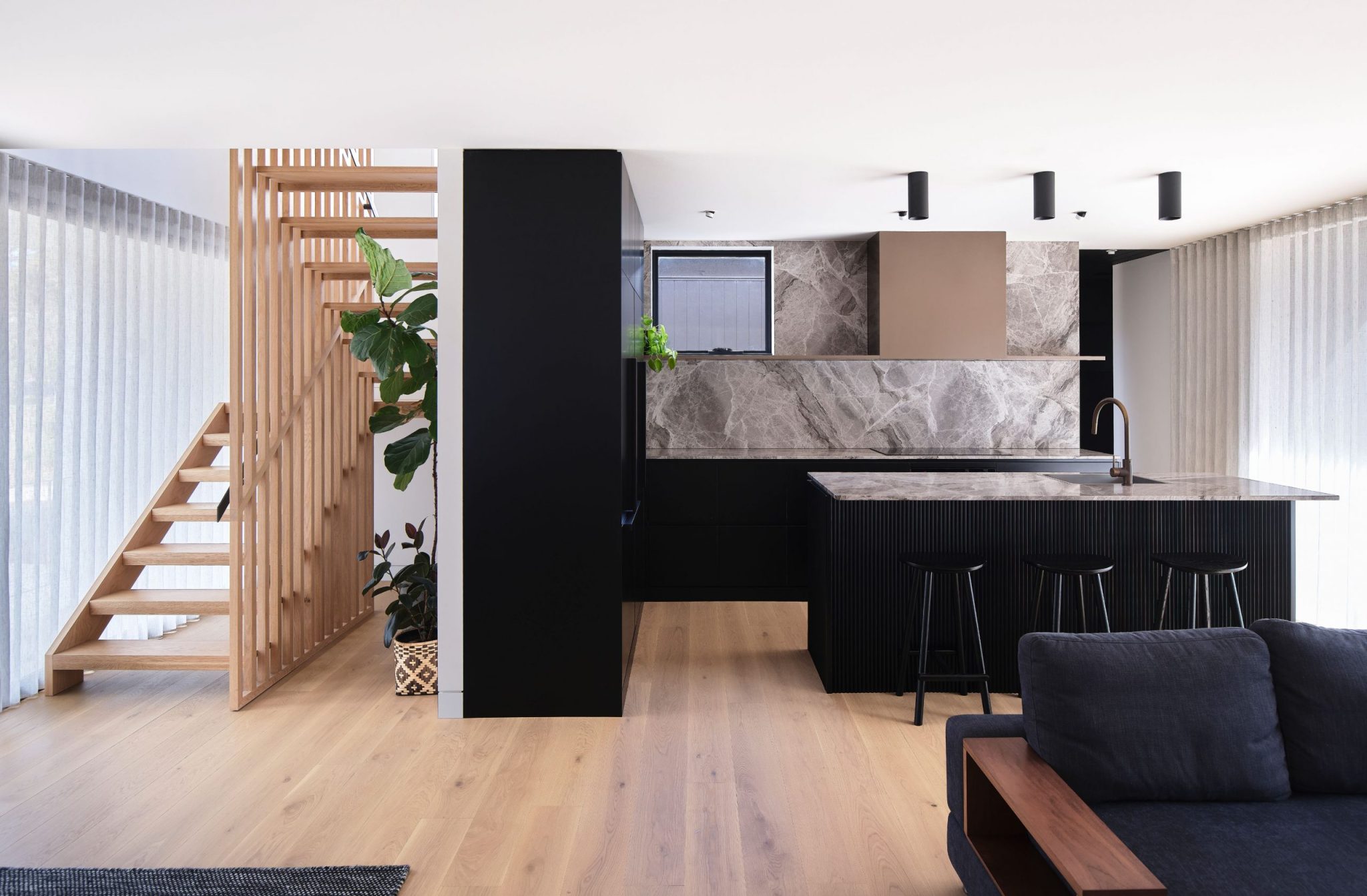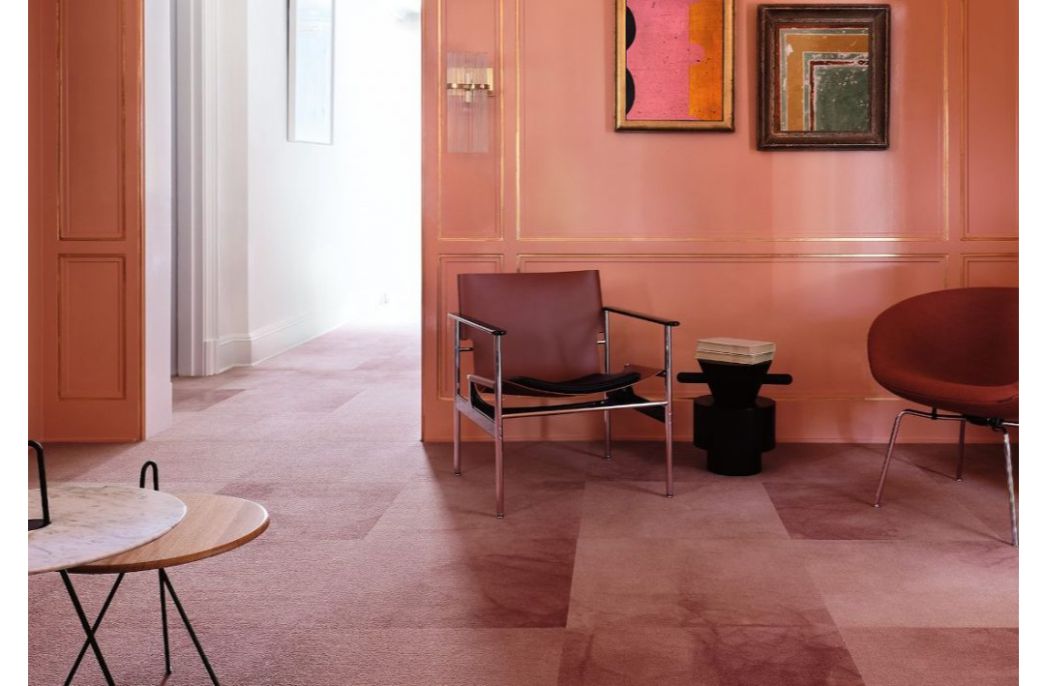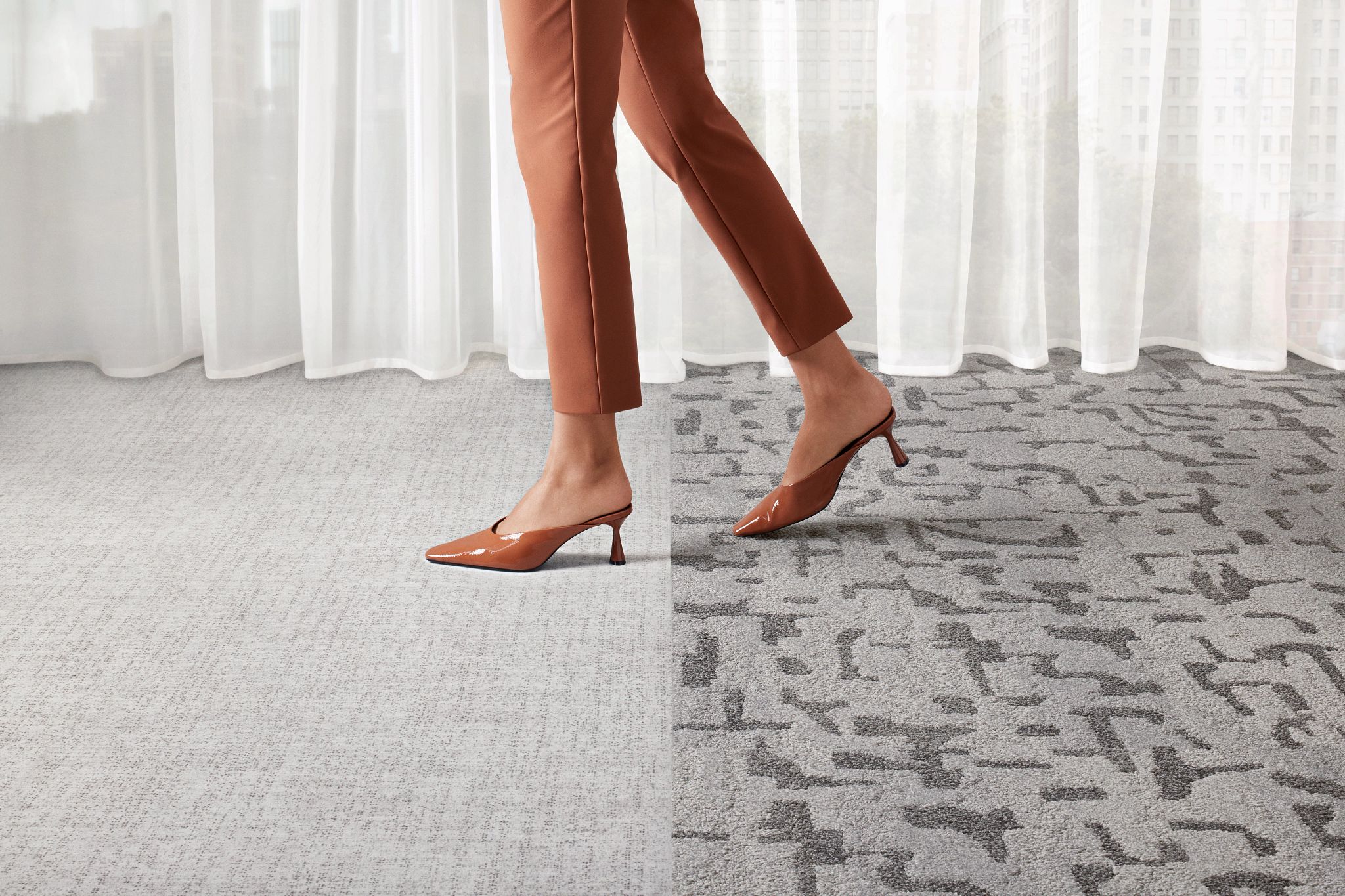
Kelly Simcox on curiosity, being true to oneself, and knowing that success is never done
Share
For Interface head of global design Kelly Simcox, interior design is about blending curiosity with empathy and finding unique ways of storytelling.
Simcox’s career has spanned both residential and commercial interior design. While she appreciates the residential space, it’s within the commercial design sphere that she feels most at home.
Working on large-scale projects with leading global design companies gives her the scope to bring her inherent curiosity together with design innovation.
As head of global design, Simcox and her team ‘walk the walk and talk the talk’ when it comes to leveraging design to have a positive impact on people and the planet.
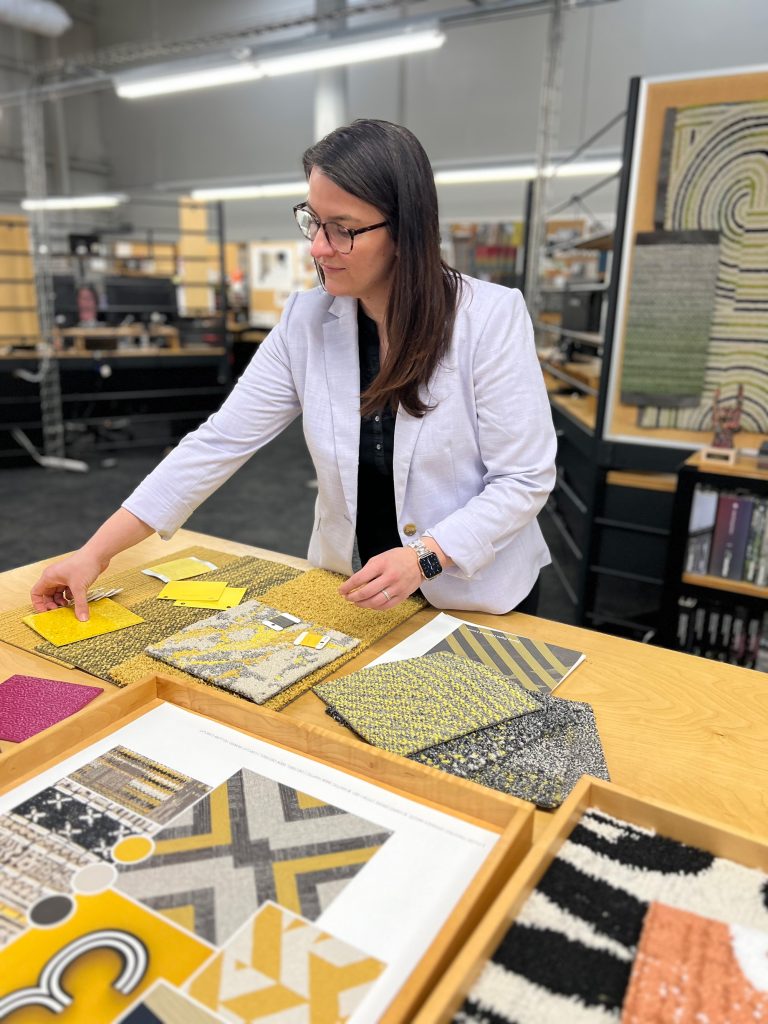
Australian Design Review (ADR) recently caught up with Simcox to speak about her career trajectory and the highs and lows that come with a successful career. Simcox reveals how she brings her beliefs and curiosity to bear as a designer and a leader of a global team, and the importance of bringing her true self to everything she does.
ADR: How do you explain what you do to others in a couple of sentences?
KS: I lead a global design team for a flooring manufacturer that is focused on being the most sustainable company in the world. In my role, I leverage my strong belief in the power of design and how it impacts people, the planet, and the spaces we inhabit.
ADR: How did you start your career? Was a career in interior design always your plan?
KS: I did not always know I wanted to be in the interior design industry. I started out planning to obtain a communications degree, but my interest in visual expression eventually led me to interior design.
My passions lie in creativity and in finding unique ways to tell stories, which has got me to where I am today, and made Interface a great place for me to be successful.
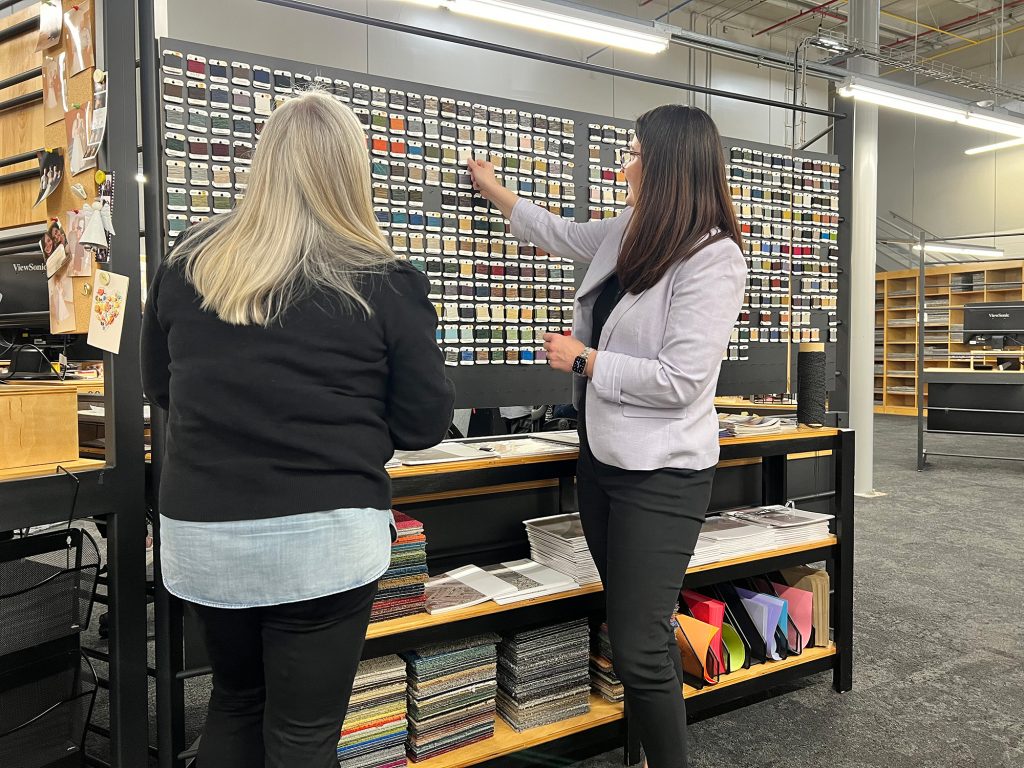
ADR: You’ve worked for some of the most innovative and pioneering commercial interior design companies in the world, including Herman Miller and now Interface. What drew you to the commercial side of interiors rather than the residential?
KS: I’ve been able to work on both residential and commercial projects during my career, and ultimately, I found myself drawn more to commercial design because of the unique challenges and opportunities it offers.
I love that I’m able to positively impact more people through commercial design and that there is a lot of variety within the category. Each project is tailored to different audiences — sometimes multiple audiences — and finding the right designs and mix of products to meet everyone’s needs can be really rewarding.
ADR: What are some of the biggest challenges you have experienced in your journey to where you are today?
KS: Every career or role has its unique challenges and opportunities. Early in my career, I had to work on how I spoke up and knowing when my perspective on a topic was valuable, or if I should be listening instead.
When I became a team leader I began learning about balancing wins across multiple stakeholders. In my current role, I am balancing how to make sure Interface delivers the high-performance products that our global customers require as well as the sophisticated looks they expect for their projects.
Finding the balance points in any challenge is what I truly enjoy.
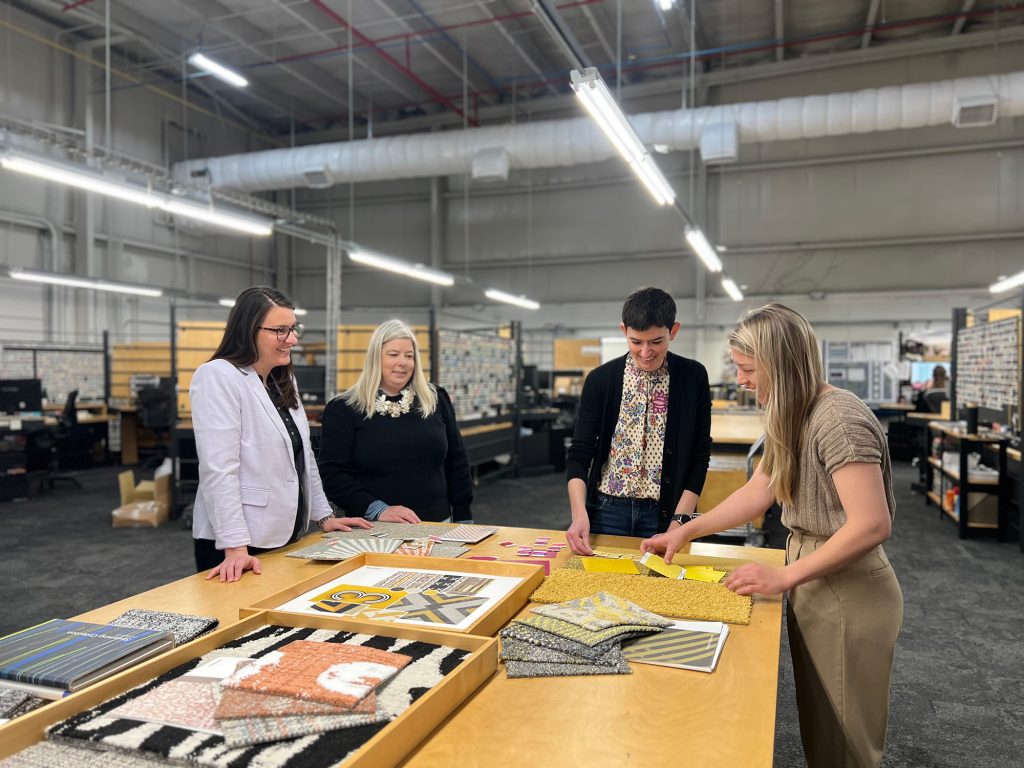
ADR: Can you share a moment where you’ve failed, had to pivot, and learnt from the experience?
KS: I’m a firm believer in embracing failure and the lessons learned from it.
One of my most memorable failures early on in my career was when I was a junior designer working on a large law firm office space. I made a mistake on the millwork drawings across 10 floors of this high-profile project.
I quickly realised my mistake just before fabrication and went to my peers on the project team to find a solution. We were able to pivot and bring the new plan to the customer.
Although it was stressful at the time, that experience taught me the power of collaboration and the importance of building trusted relationships with your partners. These ideas are essential when problem-solving to meet customer needs, and they continue to influence my work today.
ADR: How do you define success?
KS: It’s important to realise that success is never done, and we must continue to iterate as the world around us changes. However, it’s also just as important to be able to take a step back when defining success and determine what it looks like for you in a given day, week, month, or year.
Sometimes, success is a small win, or it can be a major career milestone – either way, taking time to appreciate and celebrate such moments is essential for your career journey and personal growth.
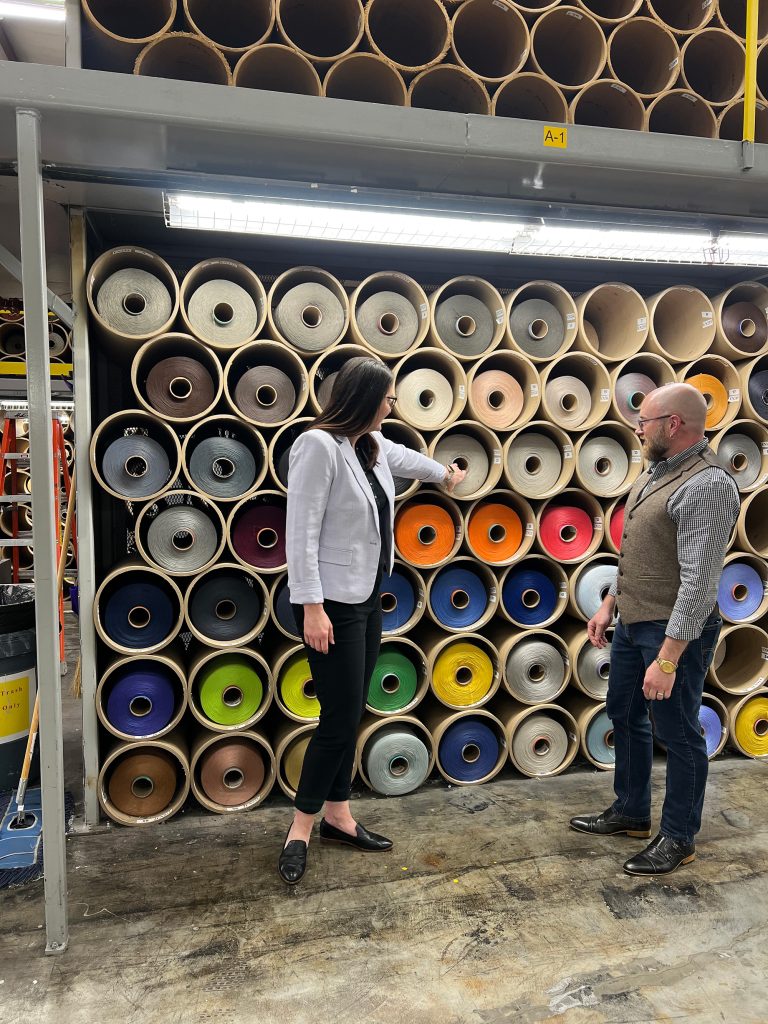
ADR: Can you tell us about one of your biggest, or most memorable moments of success?
KS: Transitioning from a peer to a leader of a regional sales team at Interface was a huge moment for me, and it validated the future of my career journey. It was a series of small wins that built trust with each person over time, and we were eventually able to harness the power of our collective team – the individual strengths and its energy – to drive us forward and position us for growth.
ADR: Was there a defining moment in your career where you felt that you had finally reached a goal, or made it to where you wanted to be?
KS: I don’t define my career journey as a ladder or different roles as stepping stones. I’ve always followed my excitement and taken a somewhat meandering path to where I am today.
Being in my current role feels very full circle as it taps into both my creative roots as a designer and my knowledge of customer needs, all while bringing together an extremely talented global team.
ADR: What has been your experience as a woman in an industry which is traditionally male-dominated?
KS: I actually don’t think of our industry as male-dominated. In fact, I view the design industry overall as women-led. I frequently had female leaders throughout my career, and I have had great experiences with them as mentors.
In turn, I pride myself on being a strong, approachable leader, and after experiencing the unique challenges that accompany being a mum, I believe that empathy and understanding are qualities that make me a better manager.
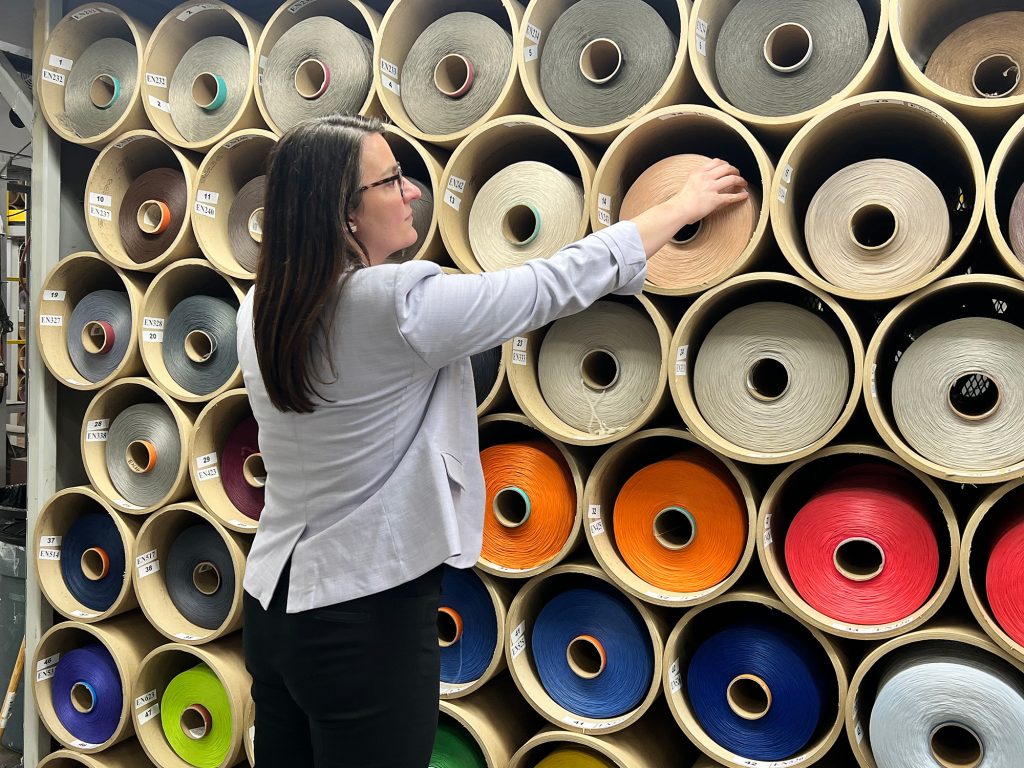
ADR: Have you noticed a shift in the industry, and if so, what are the two to three main shifts you’ve observed?
KS: Interface announced our first female CEO, Laurel Hurd, in 2022, and her authentic leadership has been incredibly inspirational for the women at our company. Female CEOs still aren’t too common – especially in the flooring industry – which is a shame, so her leadership has been a truly positive influence.
Another interesting shift I’ve seen post-pandemic is that more people are bringing their whole selves to work every day. I’m a mother and this impacts what I bring to the table in my personal life and my professional career.
I bring my true self to work every day, including the challenges or wins happening in my personal life – others are doing this too as work becomes more flexible. I hope this makes us all more compassionate, understanding and accepting of the diverse and unique voices that surround us.
Over the course of my career, I’ve also witnessed that there is a greater collective focus on being more mindful when it comes to design solutions and product selection within the commercial building industry.
Twenty years ago, there was a significant trend of opulence, and many designers used resources without considering their impact on the planet. Today, we view resources and opulence very differently – you see a greater emphasis on reuse and low-carbon innovation, on investing in products that are good for people and the planet, and on creating positive spaces that are built to last.
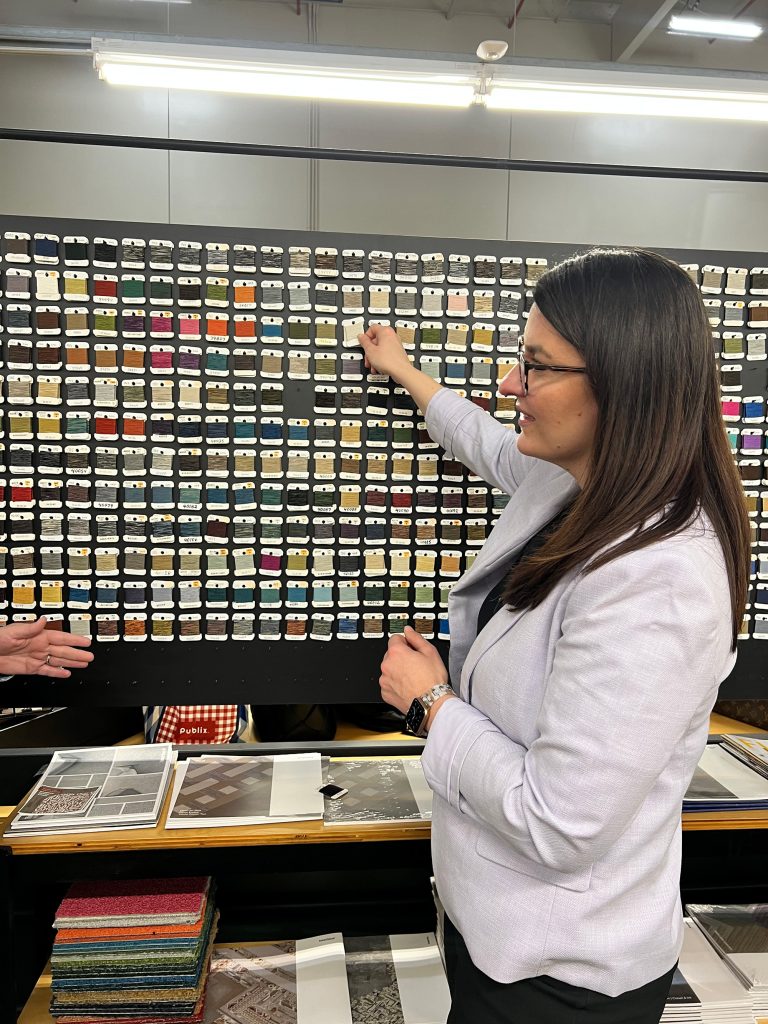
ADR: A recurring theme in the interviews we’ve been doing for the Women of Influence series is that innately feminine traits of nurturing, caring and compassion have helped women succeed in their field of architecture and design. Do you think that these characteristics have been beneficial to you in your career?
KS: Absolutely. Women often bring a sense of compassion to everything they do, including the workplace, and I’m confident that this has helped my career. My favourite mentors, both male and female, have been those who lead with curiosity about how we can improve and grow as professionals and a team.
When we show up with empathy, we always reap rewards. Empathy enables people to learn from others and to understand diverse needs, and this often translates to design solutions that benefit a greater variety of people.
ADR: Can you give us an example or two of when these characteristics have come into play in a significant way for you?
Being compassionate and caring goes hand-in-hand with being curious – curious to hear other people’s perspectives and diverse experiences.
I’m a firm believer that the voice of the whole room is way smarter than just one person in it, so having a sense of curiosity and creating a space for others to share ideas is a powerful tool in any workplace and career.
ADR: Have you ever thought, or experienced a situation where your gender may have been ‘used against you’?
KS: I’ve definitely had these kinds of experiences. Rather than dwell on them, I focus on what I can learn from the experience and how I can be a better leader and peer to my colleagues to create an environment where all voices are valued and heard.
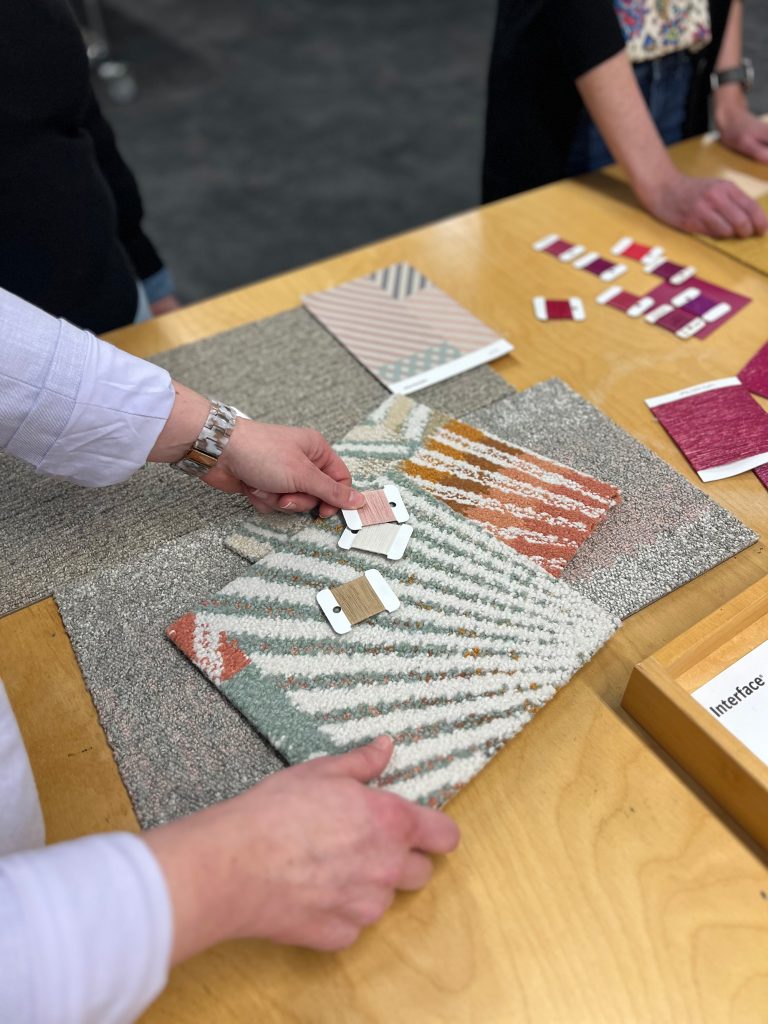
ADR: Many women we’ve talked to have mentioned the importance of mentors. For some, they didn’t have female role models and it was male mentors who became influential. Can you talk to us about any significant mentors you’ve had over the course of your career?
KS: I’ve been extremely grateful to have mentors throughout my career who have been willing to be honest with me and have also helped me see things in myself I hadn’t yet seen. Their encouragement to take chances has been invaluable to my development. I’ve always asked for feedback at every stage of my career to demonstrate a willingness to grow and improve.
I believe this openness has made people more willing to share their observations and to challenge me. Throughout my career, I’ve been lucky to find and learn from mentors, both male and female, who bring me into important conversations and offer great opportunities to build my career and increase my visibility.
ADR: How do you navigate motherhood and career?
KS: I have an eight-year-old daughter and a five-year-old son. I love being a mum and wife, and I love my work. Showing up at work and as a mum is, of course, hugely important to me. I also try to demonstrate passion and excitement for my job to my daughter especially so she knows what having a fulfilling career and family life can look like.
I’m also extremely grateful to have a husband who shares a similar sentiment and shows up every day for our family and children. I can rely on him when I can’t step away from work, and vice versa. I’m proud of the example we’re setting for our kids.
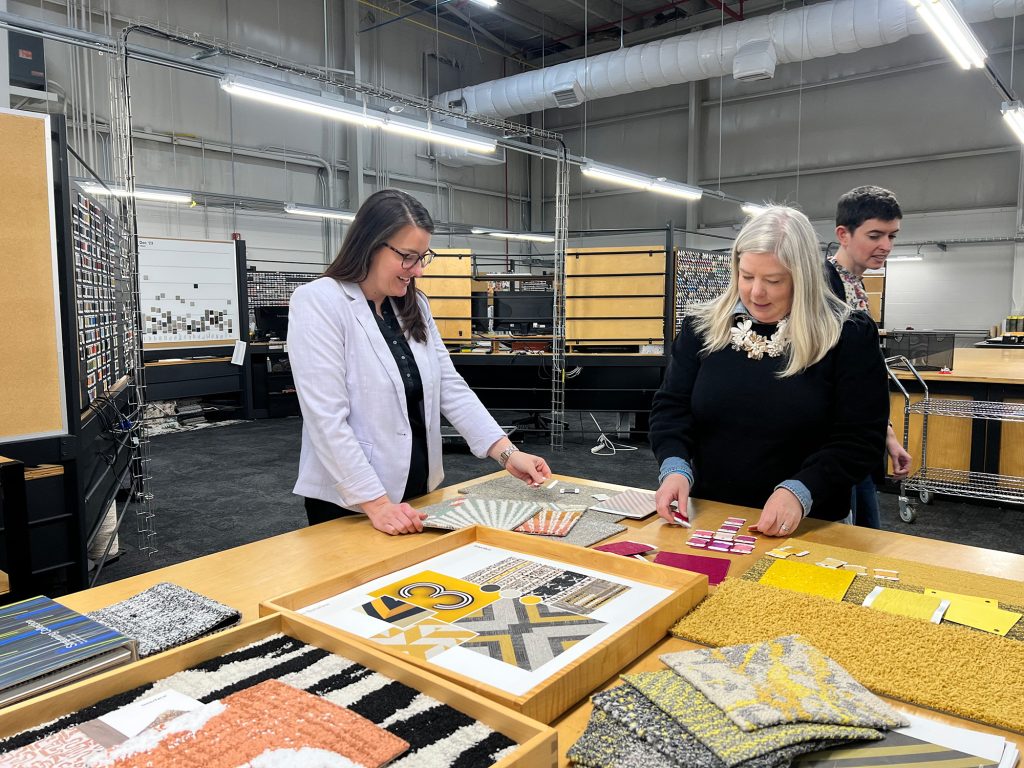
ADR: How do you foster young female talent or mentor the young women in your team?
KS: I try to open the door as much as possible for my team, as my mentors have done for me. Another important way that I try to elevate my team is by explicitly naming the people who did the work to acknowledge their wins and efforts.
Women may not always get the credit they deserve, so I want to make sure we celebrate everyone’s achievements.
ADR: What advice would you give to young women starting their career in the commercial interior space, with the dream of working for companies as innovative and boundary pushing as Interface?
KS: Work hard. Be curious. Seek out mentorships. Build relationships. Learn something new every day.
ADR: What advice would you give to your 20-something-year-old self?
KS: I mentioned a similar sentiment earlier, but I would tell myself not to think of your career as a ladder. Think about what excites you, where your energy is focused, and lean into it. To build a career journey that fits you as you grow and evolve, I think it’s important to follow what you love and be curious about what’s next.
For the month of March, in recognition of International Women’s Day, Australian Design Review will be shining a spotlight on women of influence in architecture and interior design. While we pride ourselves on championing women and people from underrepresented groups at all times, we believe it’s necessary to recognise the achievements of individuals who have risen to the top, despite social- or industry-related imbalances. As well as bringing you profiles and project features that celebrate the work of game-changing, innovative women, we’ll also lean into the very real, yet rarely discussed realities of working in an industry that still holds onto traditional modes of working that aren’t always inclusive or supportive. It’s our privilege this month to bring you profiles and features that celebrate the unique perspectives and talents that women bring to the architecture and interior design industry.
Photography supplied by Interface
You Might also Like
